A year on from finishing comfortably in the playoff places in fourth, this season has been a disappointment for the New York Red Bulls. After only being able to win one game in three months, Gerhard Struber, the former EFL Championship manager, was relieved of his duties in early May, with Troy Lesesne chosen to take the helm as the interim coach. However, so far, the change in manager has yet to yield any notable gain in results, with the side only managing to win four out of their last eight games.
At the forefront of the side’s slip down the table from last year is the team’s general inability to find the back of the net, with the side only managing to score 11 goals in goals in 16 games, the lowest amount in the division.
This scout report will provide a tactical analysis of the tactics of the MLS side in possession and explain why the side’s troubles in front of the goal have continued under Lesesne.
Key aspects in attack
Progression chance creation and support
In order to fully explain the problems that the Red Bulls have faced this season, it is important to briefly mention some important concepts in the possession phase of football. Ultimately, there is no correct way to play football, with every manager having their own principles and stylistic preferences. However, within this, there has to be consideration of whether or not these principles are effective.
From a possession perspective, a general question that needs to be considered is whether or not a team can progress the ball consistently and create certain chances consistently. In order to do so, teams look to destabilise an opposition defence by looking to create and exploit new or already existing weaknesses. To do this, players need to be in close proximity to one another in order to support each other, not just from the perspective of having multiple passing options, but being able to support each other’s actions. Whether this is by means of multiple passing options in different spaces in positional play sides, or playing long balls and counter-pressing to win the second ball. The support provided by teammates can further allow opportunities to destabilise the opposition through means such as off-the-ball movement, numerical superiorities, qualitative superiorities as well as positional superiorities. These are not all of the aspects of possession but those that are relevant in this analysis.
New York Red Bull’s structure in possession
Under Lesesne, New York has alternated between using a back three or a back two when building up in the middle third of the pitch. What has remained consistent is the loading of the centre, with the side playing a double pivot with the two wingers inverting into central areas and the attacking midfielder advancing slightly, playing almost as a second striker. Examples of their structure in a back three as well as a back two can be seen in the images below.
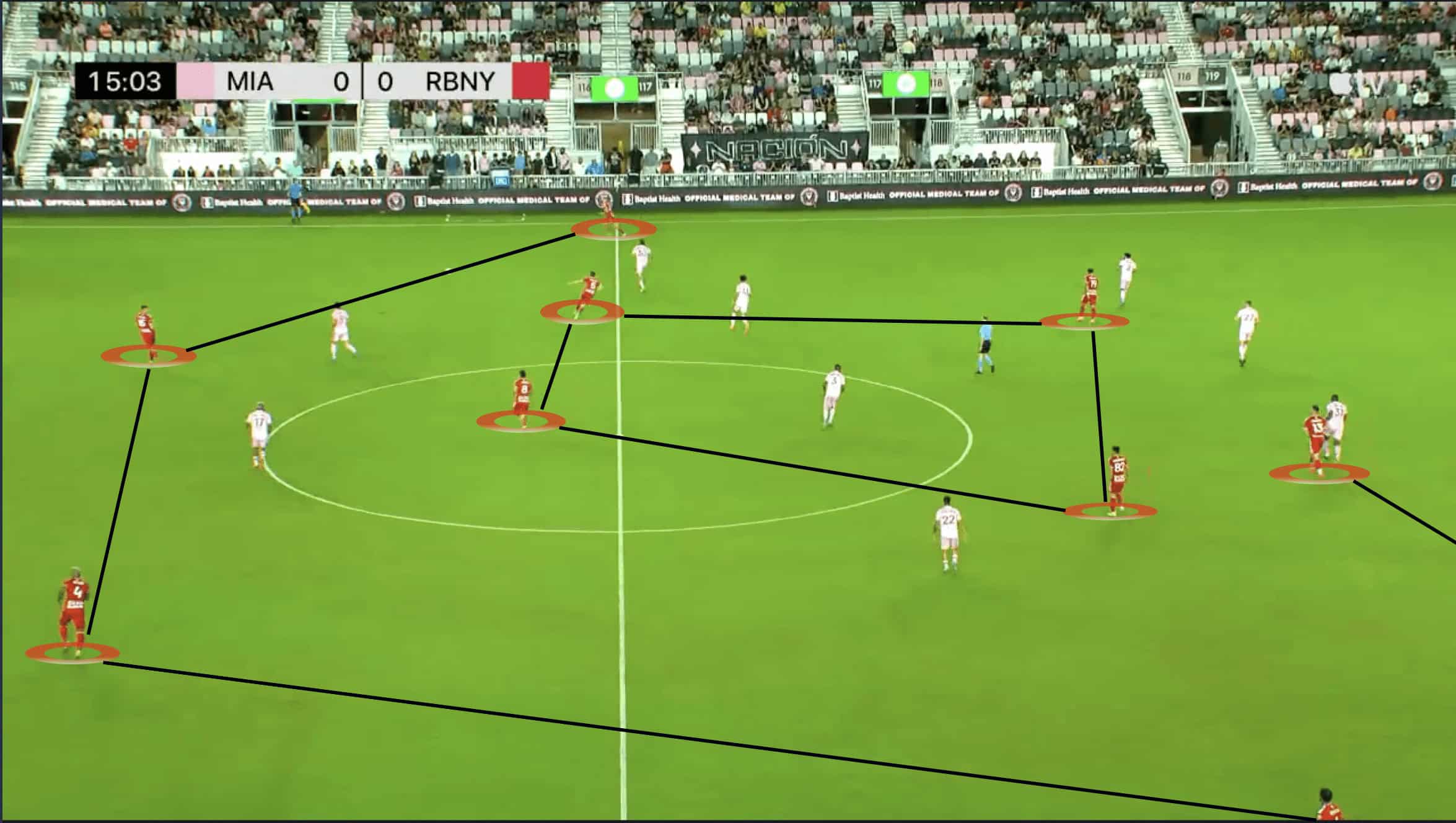
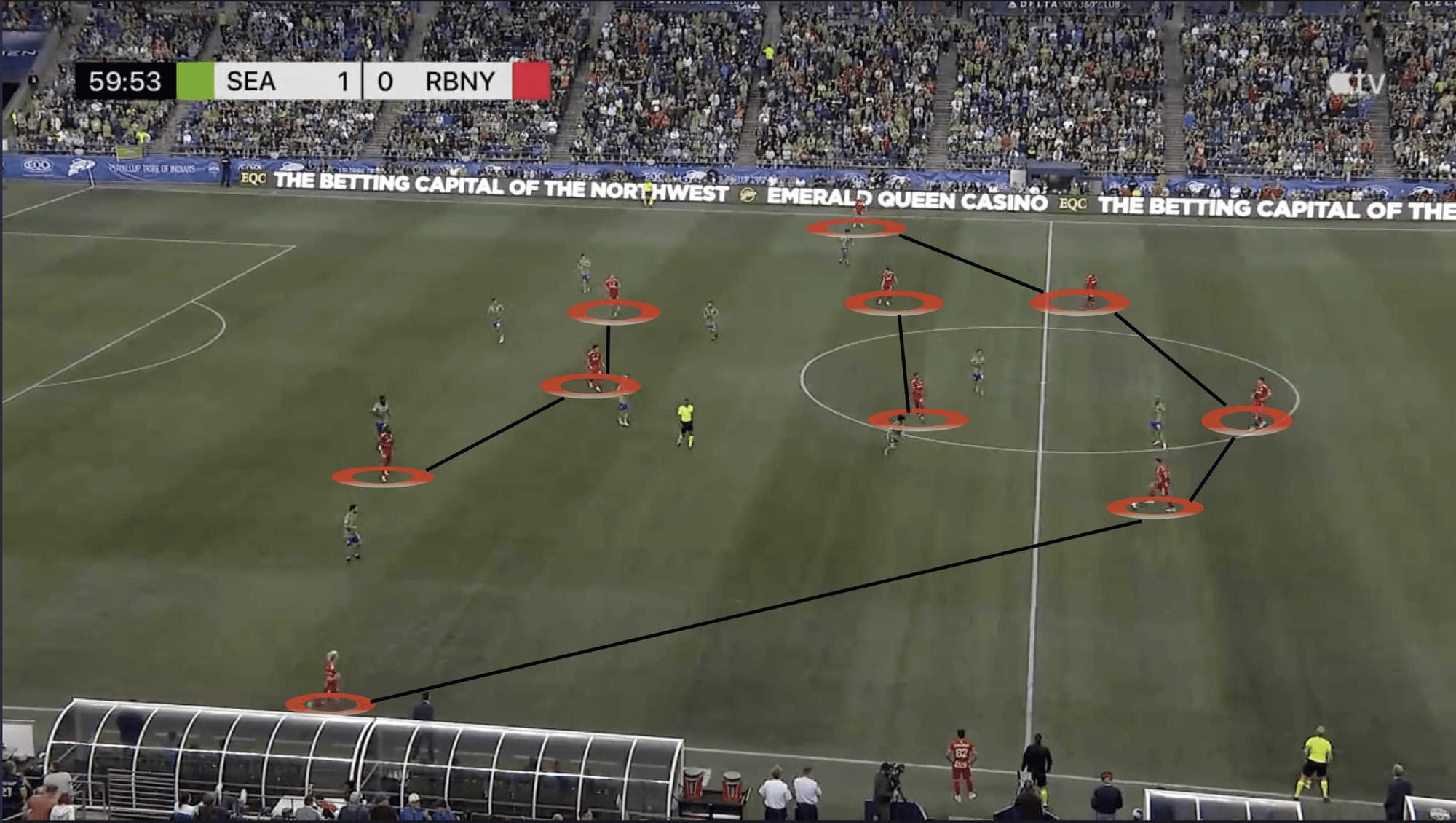
Within this structure, NYRB look to play the ball to the wide areas and create chances from these positions. This occurs as a result of the overloading of players in the central areas, which causes the opposition to become more compact centrally in order to prevent passes to these players.
If the opportunity arises, New York will play vertical passes to the advanced players in the centre, who will look to play the ball out wide. An example of this can be seen below, with Frankie Amaya playing a pass to Dante Vanzeir who then finds John Tolkin in the wide areas, a player that has been linked to a move to the Belgian Pro League. The NYRB will either look to engage in combinations such as these or pass to the player in the wide areas directly.
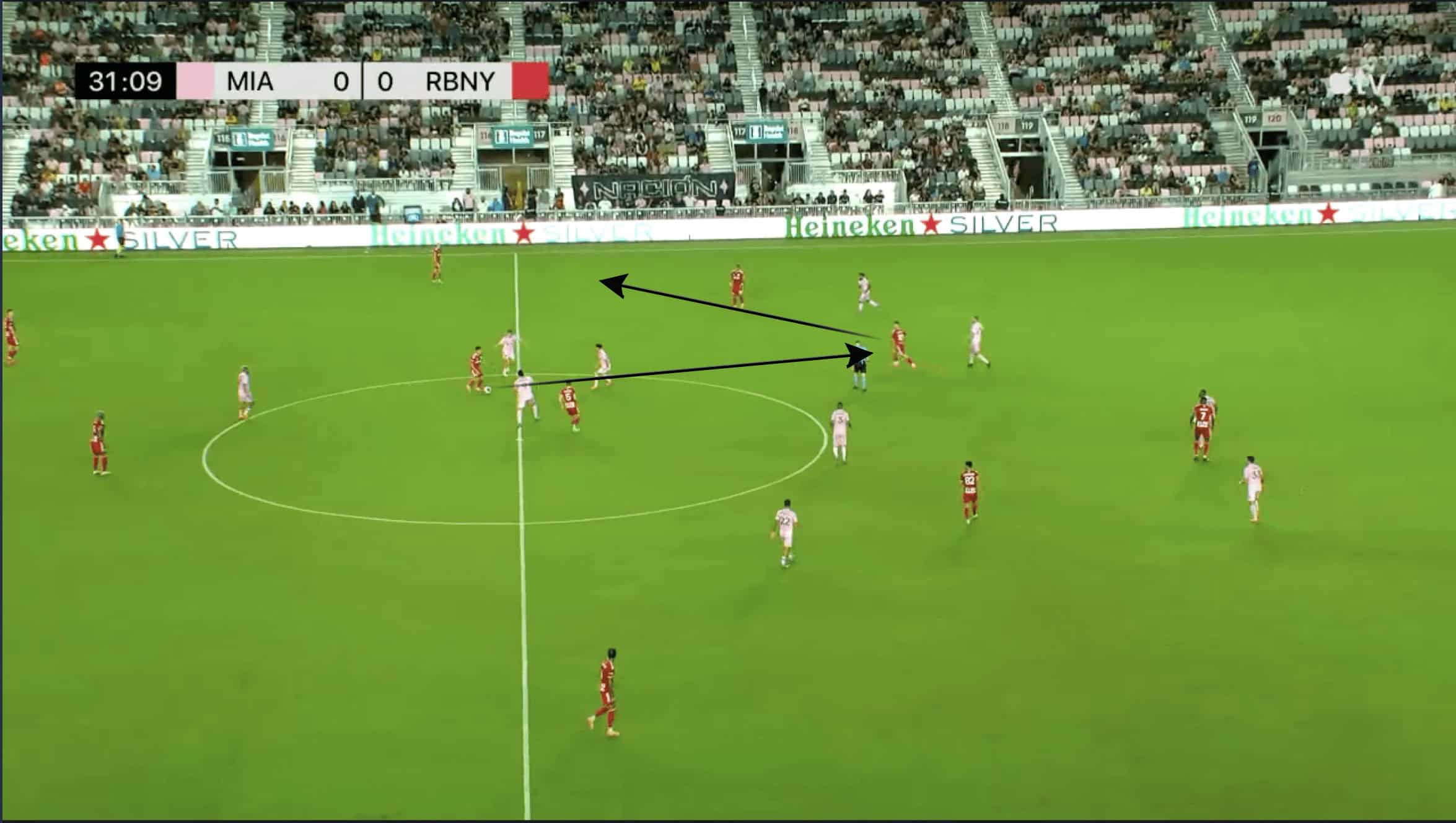
The team’s problems in front of goal start to take place in the middle third of the pitch. This can be seen moments later in the previous example.
When the ball is in wide areas, the inverted wingers look to attack the last line, with the wingers in this instance looking to make forward runs diagonally back towards the wide areas. This touches on the issue of running into positions in wider areas rather than being in position, which positionally puts players at a disadvantage and can inhibit players that are good in 1v1 situations from being able to take advantage of mismatches. This can be seen in the example below, with Wikelman Carmona, running from the centre to the wide area. This would put Carmona at a disadvantage when receiving the ball, as he would receive the ball facing the touchline, limiting the number of actions he could make. This then becomes easier for opposition full-backs to defend.
As mentioned earlier, the New York Red Bulls fashion many of their chances from wide areas. However, through diagonal runs from central areas to wide areas, the actions of the recipient of the pass are limited. Thus, the side are not able to even consistently get into positions that could enable them to create goal-scoring chances.
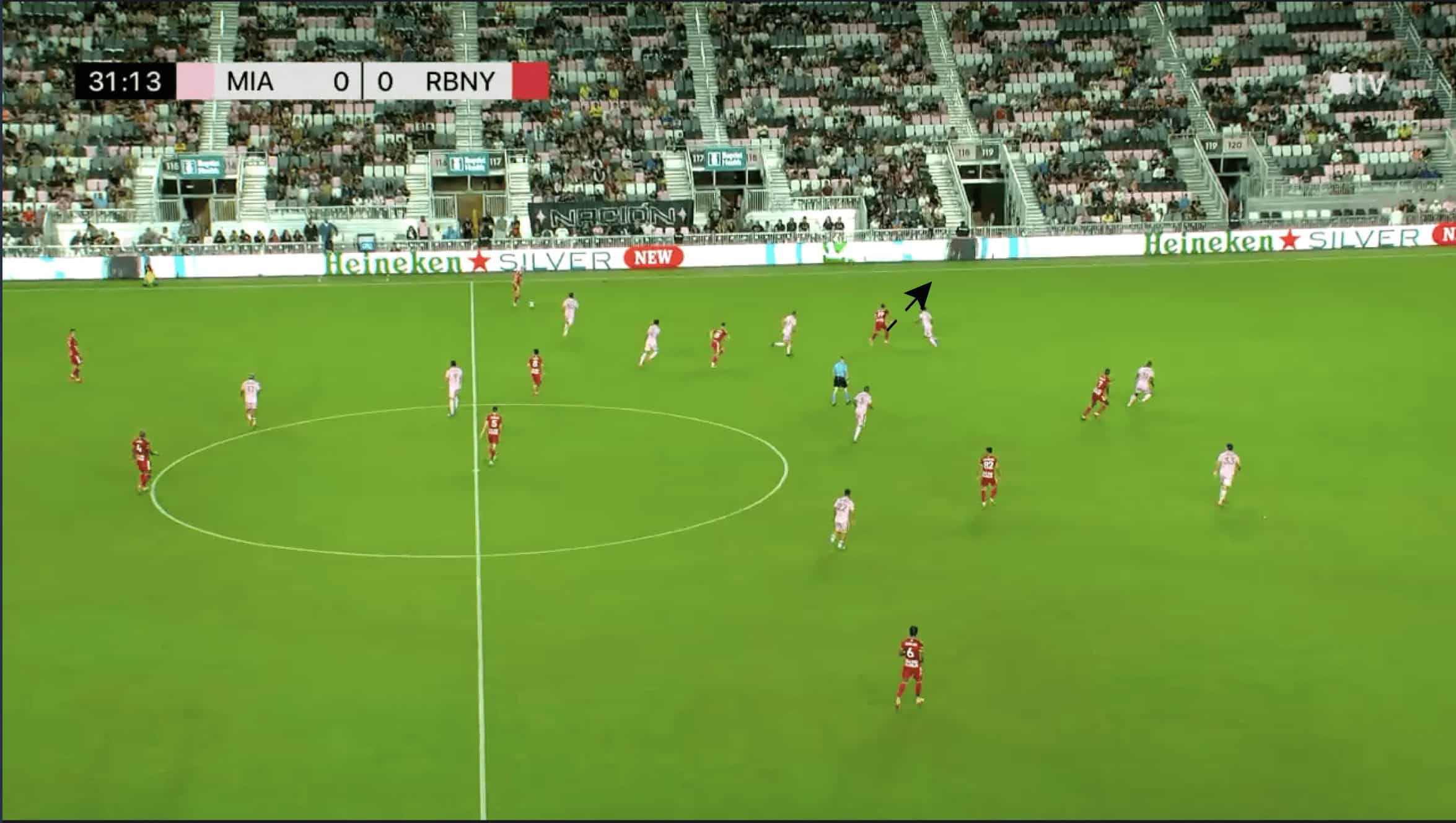
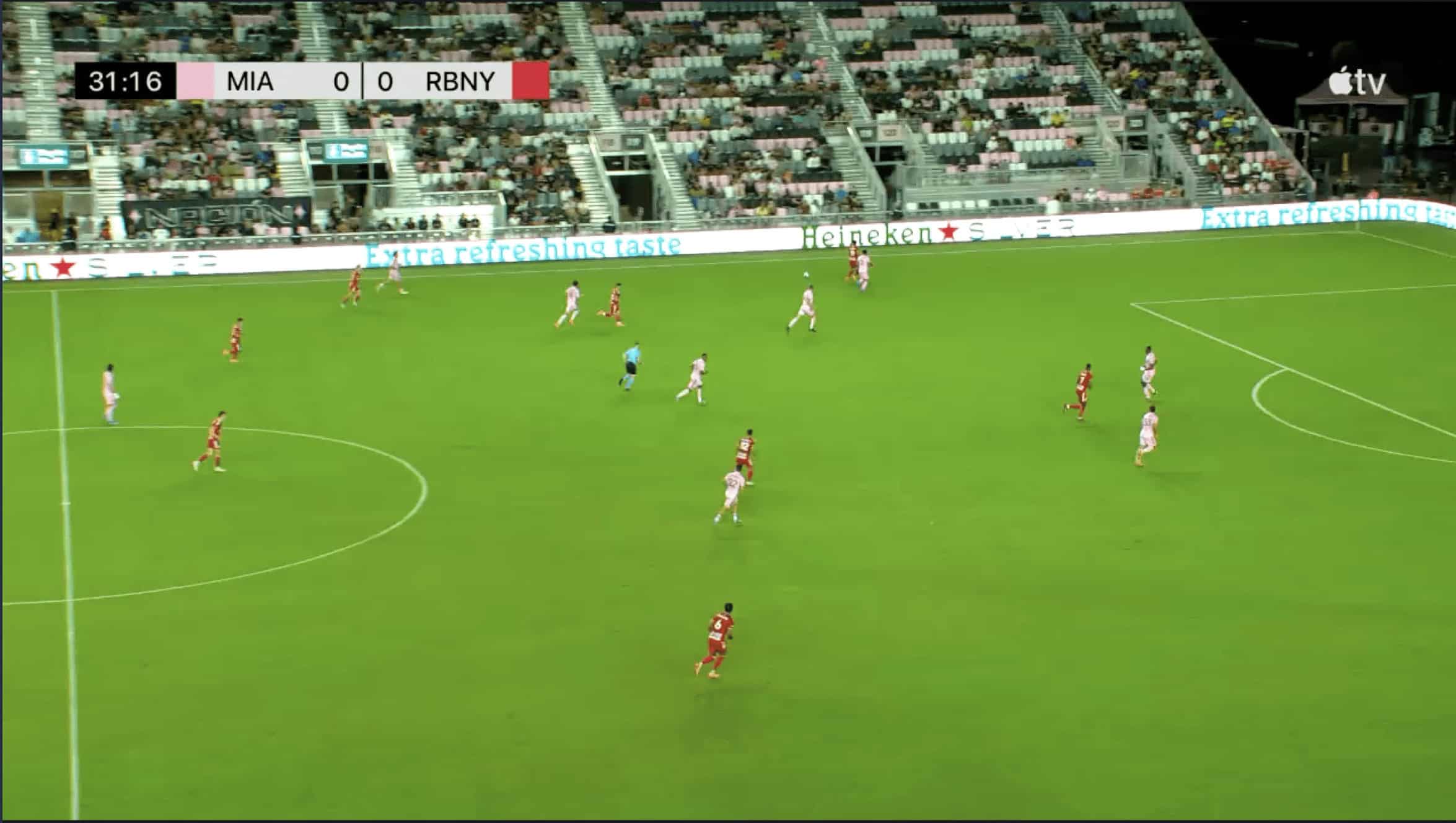
Another aspect that prevents the side from being able to consistently create chances from the wide areas is the support offered to players when in these areas. As previously stated, in possession the goal is to destabilise the opposition. With multiple players supporting the ball carrier, the opposition is forced to cover these players, resulting in the creation of spaces, which players of the team in possession can exploit. However, the ball carrier for the New York side in the wide areas is often isolated which gives the opposition the advantage defensively.
An example of this can be seen in the image below. With Kyle Duncan advancing the ball further down the right-hand side, the players ahead of him all look to make runs into the box with no one dropping slightly deeper in order to provide a passing option to the right-back. Furthermore, there is no support from players behind the ball in central areas. As a result, Duncan finds himself in a 1v2 situation.
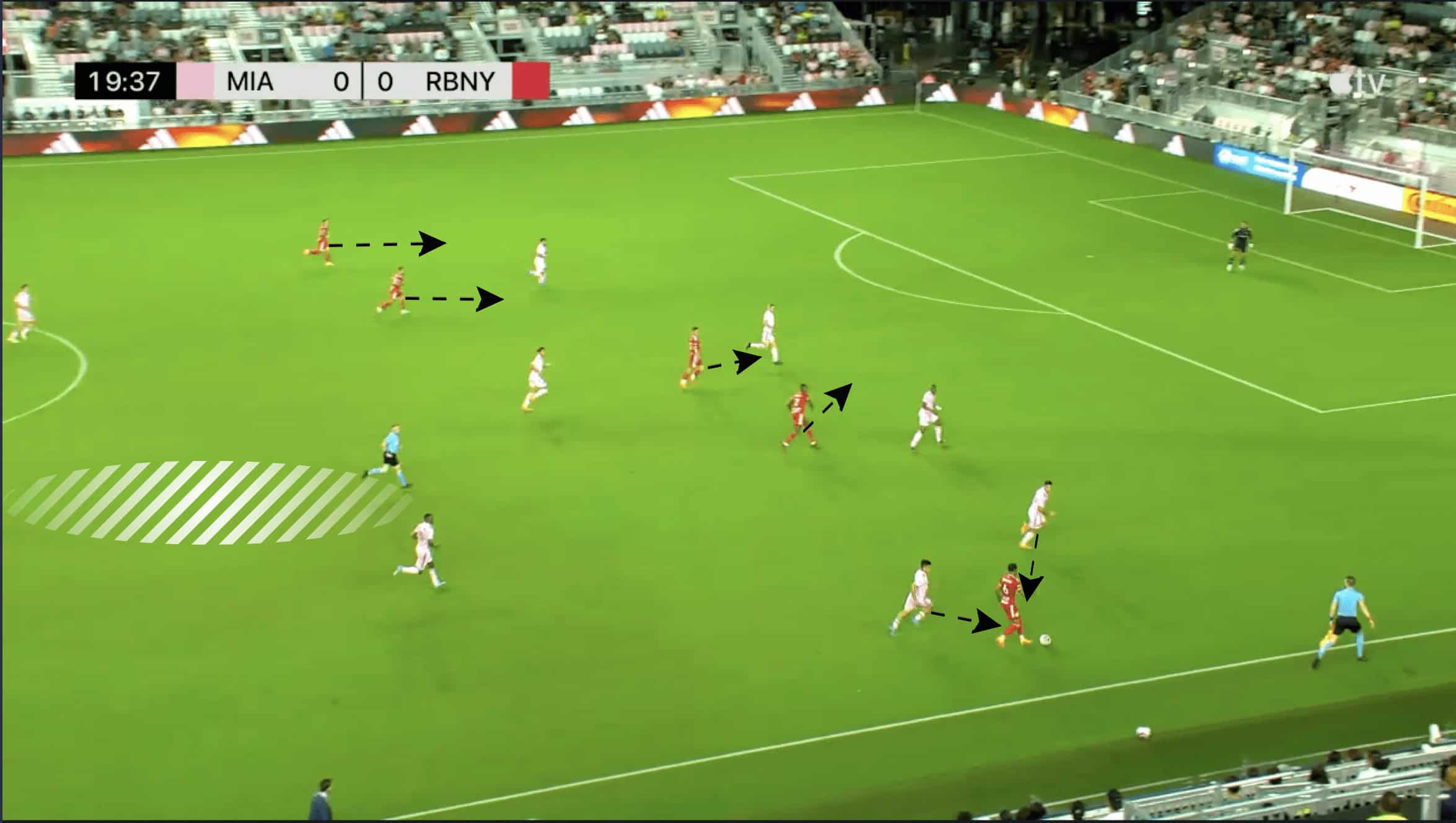
Another example of this could be seen again later on, with Duncan once again receiving the ball on the right-hand side. Once again, the passing options ahead of the right back all look to make runs into the box and the players behind the ball do not push up quickly enough in order to provide support from behind. The opposition find themselves in a position where they have a numerical advantage with a 3v2.
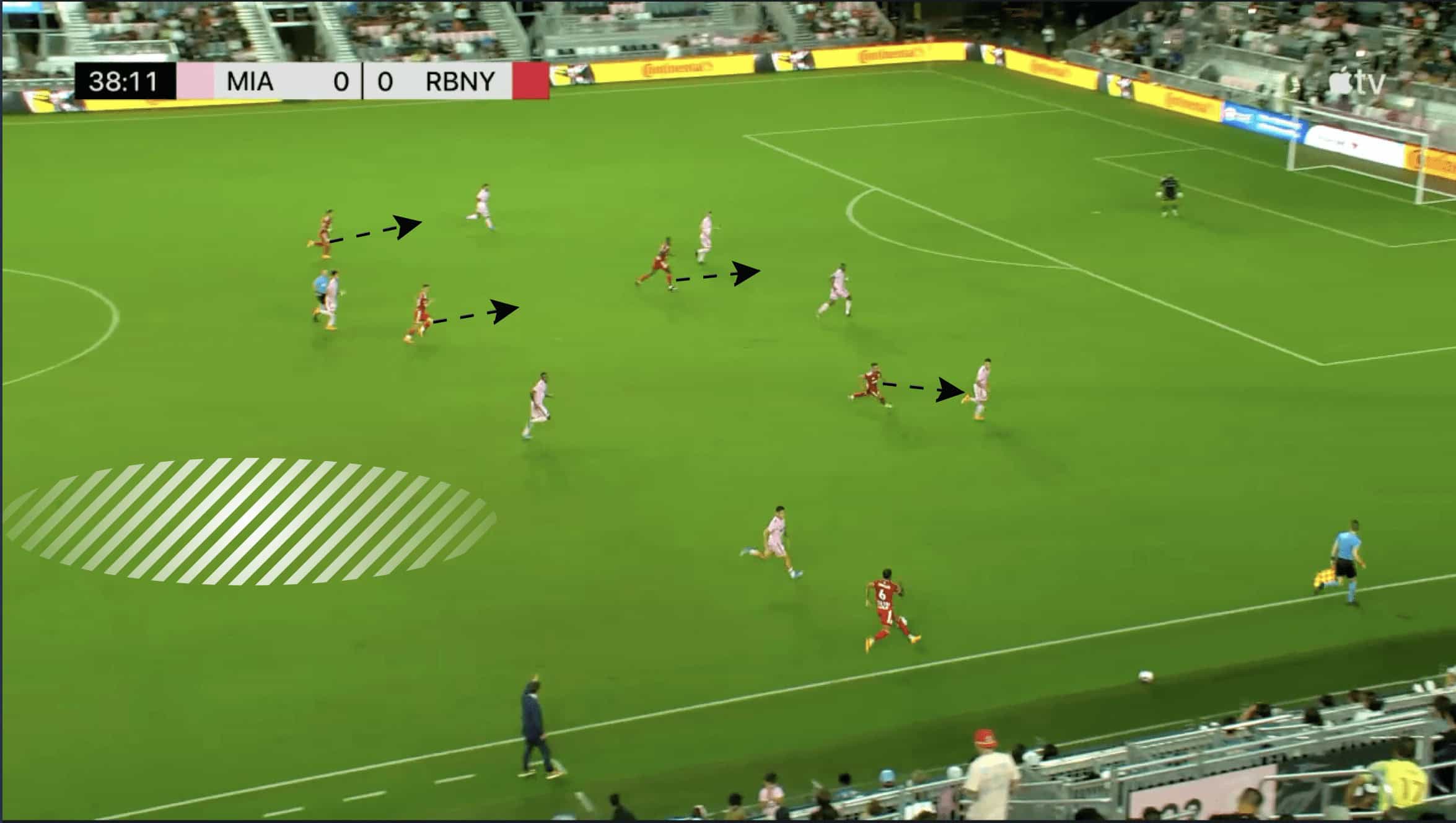
Similar issues again take place in more advanced wider areas. In the example below, Omir Fernandez receives the ball with the opposition full-back advancing in order to press the winger. As a result of this, cover is reduced in the back line. Although the midfielders are close enough to offer support to the player, they stay in position rather than move closer to Fernandez. Additionally, the winger would have no players overlapping or underlapping in order to take advantage of the reduced cover in the back line. Once again, the player on the ball would find themselves isolated and have more opposition players around them than teammates.
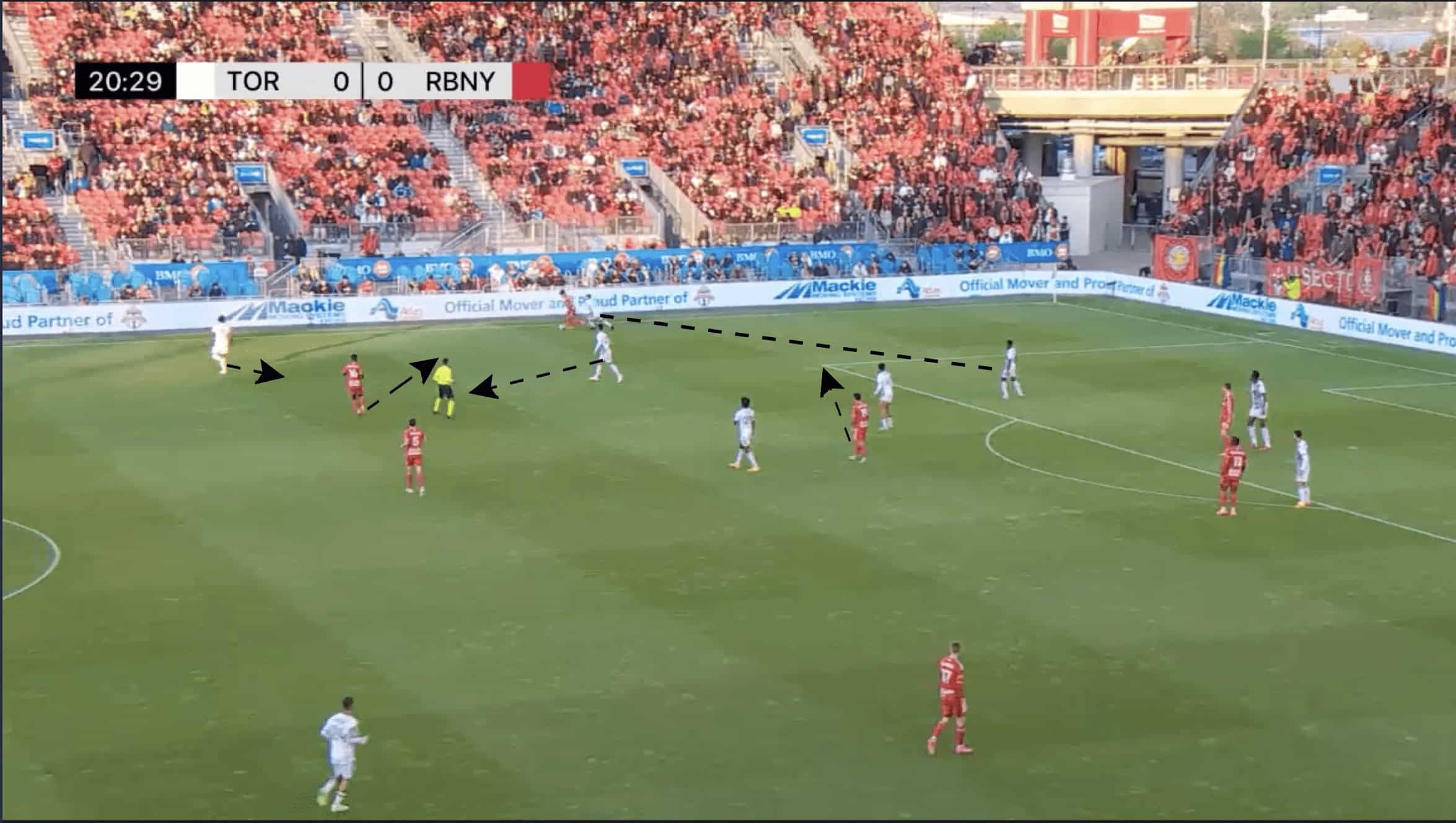
Another example of wide players isolated can be seen below.
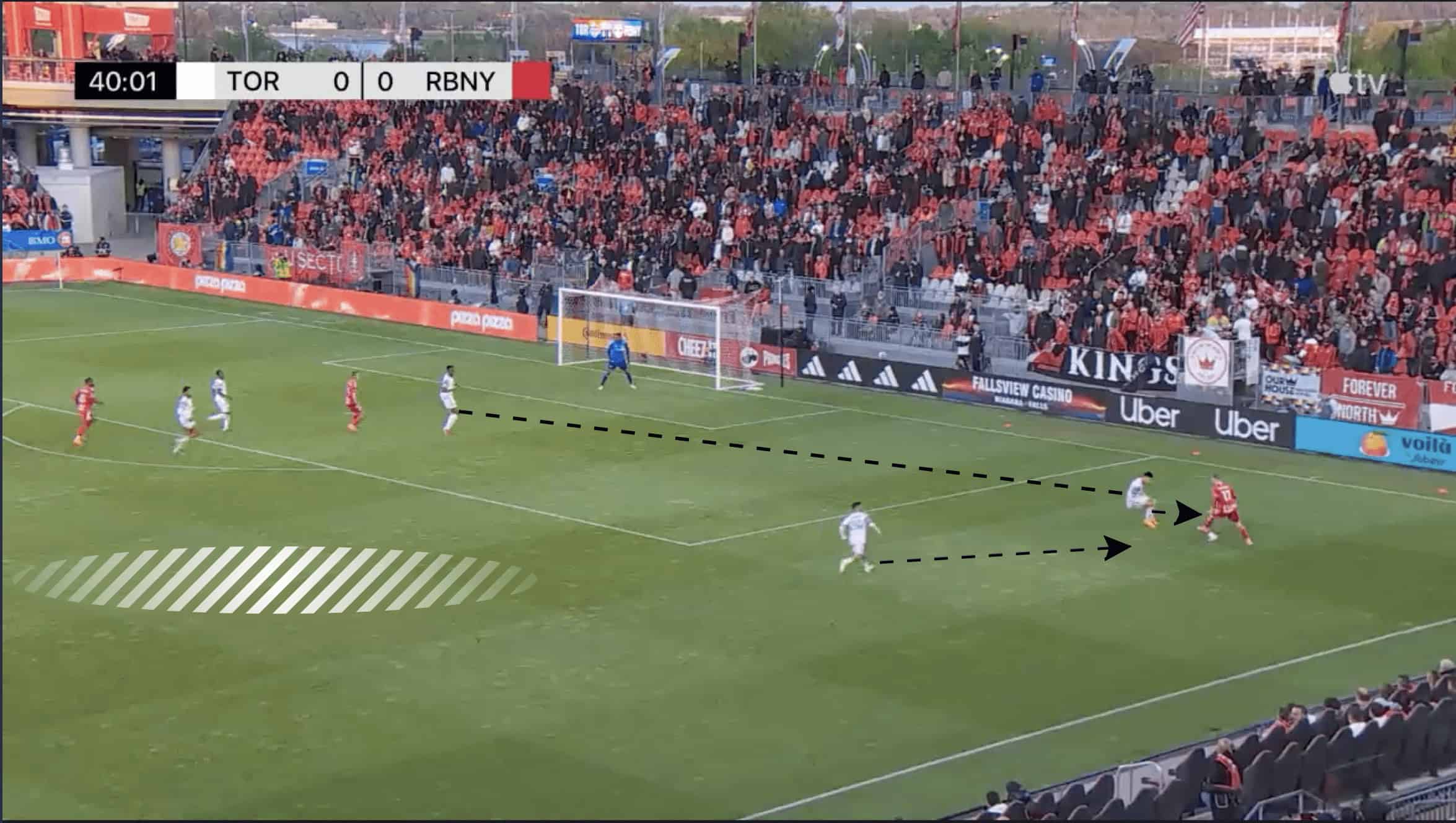
New York Red Bulls in the final third
In the final third, New York look to play crosses in from the wider areas. However, at times the side seem to be in a hurry to do so. This prevents them from fully being able to take advantage of moments when they do find space in these areas through actions such as over or underlapping runs that help create depth and reduce opposition cover in the box.
In the example below, after Carmona plays a pass to former Celtic player Cameron Harper, rather than continuing to run forward into the space between the opposition fullback and centre-back, Carmona stays in the same position. This does not allow them to fully take advantage of the 2v1 situation and as a result, the New York players in and around the box are all in positions where the opposition can see them and adjust to their actions easily.
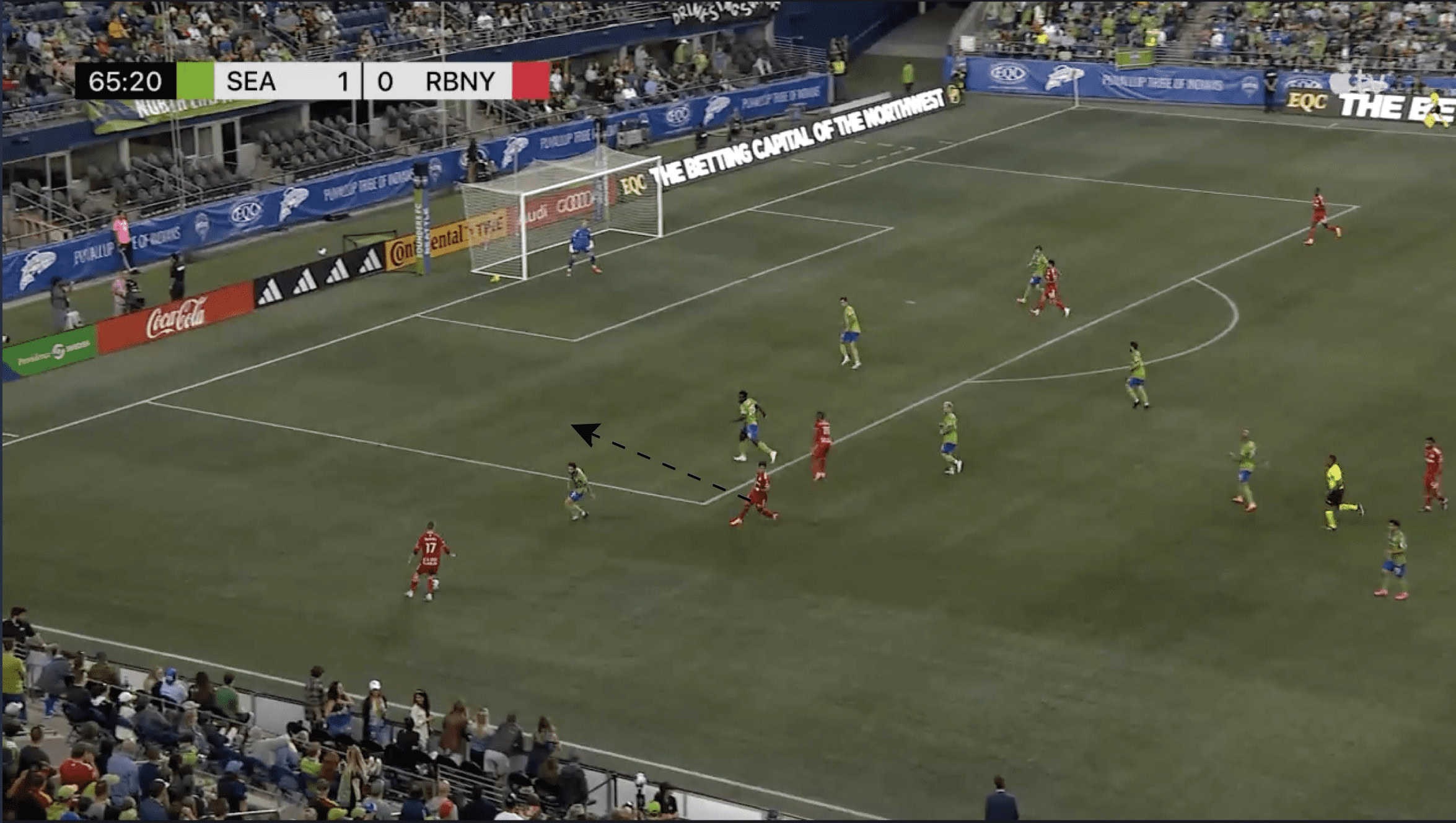
Below, another situation where the New York Red Bulls do not take advantage of promising situations in the wide area can be seen. With the ball played to Carmona on the left, Lucas Linhares (Luquinhas) stays in his position at the edge of the box rather than attacking the space between the opposition full-back and defender.
Through making this run, Luquinhas could provide an option for Carmona and put himself in a position where he could provide a cut-back. However, from this position, Carmona would choose to shoot due to the lack of supporting movements as well as the lack of options in the box.
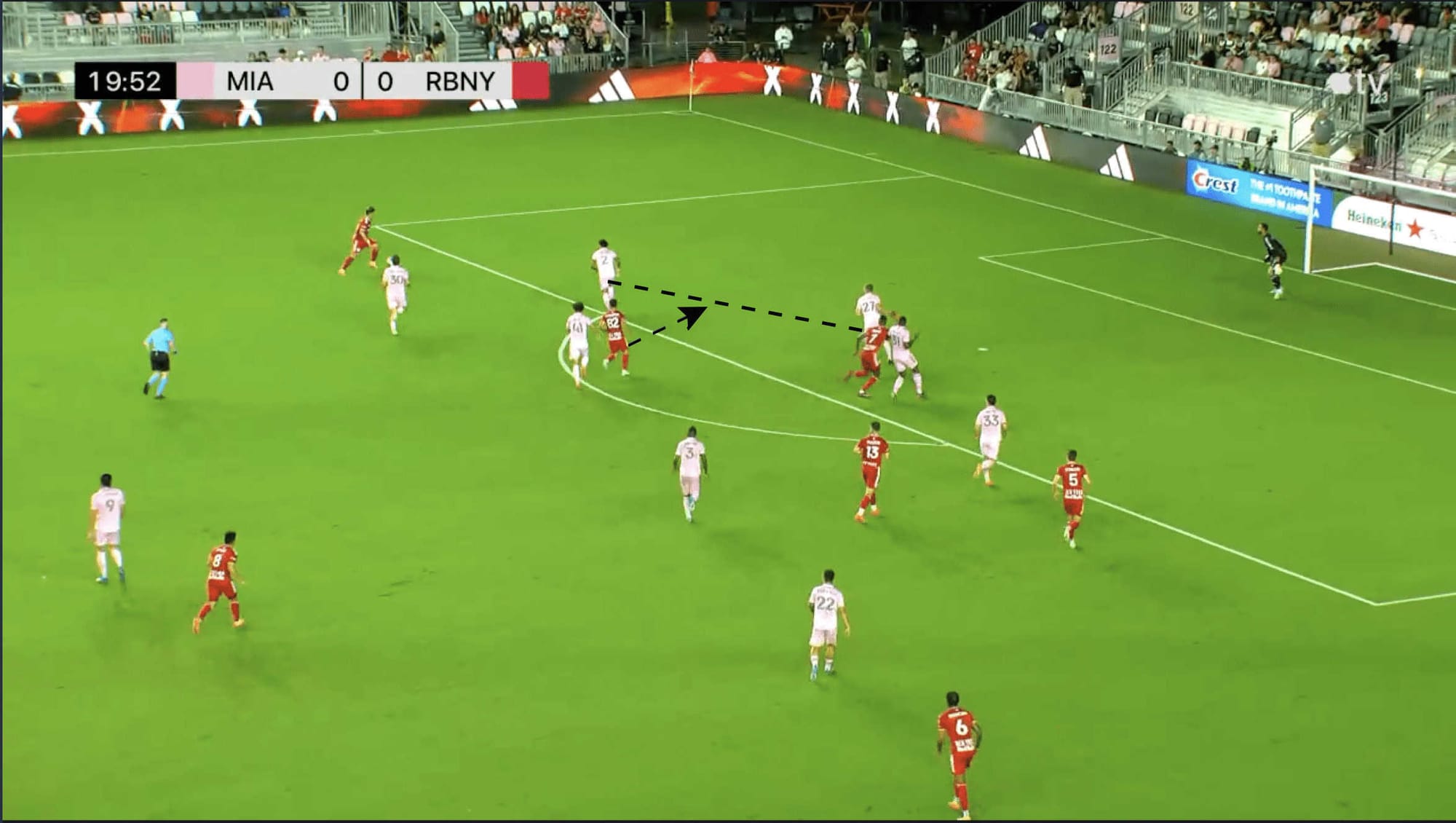
Conclusion
Troy Lesesne is very much aware of the side’s struggles in possession, as the coach has stated that his men need to improve in possession and have been improving in possession under his tenure. The 11 goals that the side have managed to score is not only a result of a lack of chance creation but poor finishing as well when chances are created, with the xG of the side suggesting they should have converted closer to 22 goals.
As this analysis has highlighted, the side have deficiencies in possession that prevent them from being able to cause significant threats against opposition defences. However, there have been instances where the side are able to support each other and take advantage of the spaces that this support creates. However, these actions will need to start taking place on a more consistent basis in order to consistently create chances.





Comments